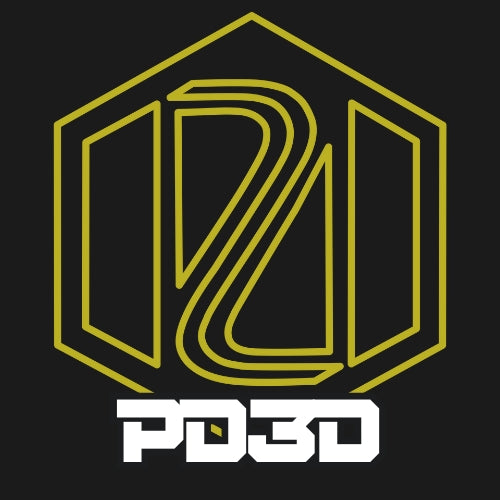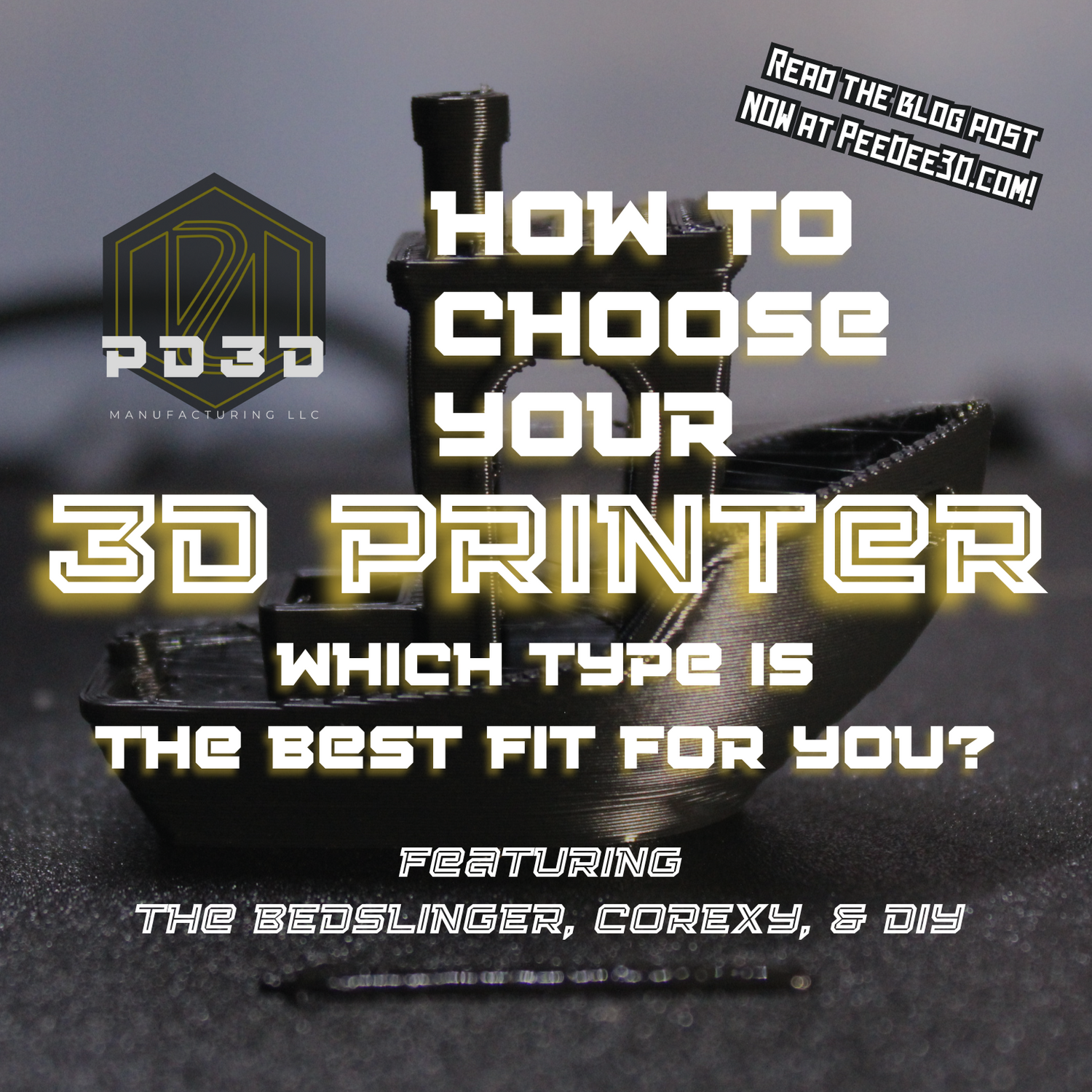Choosing your 3D printer is like going to a car dealership and finding your first car. Maybe you picked your car based on how cool it looks, or how fast you could run it, but in the end they all do the same thing – drive. The same idea can be applied to 3D printers. They all do the same thing – print – however at differing degrees of quality and speed. By researching the mechanical systems of each printer and learn about what makes each of them great, you can choose which one is best suited for you.
There are 3 types of printers that are strong choices for your foray into the 3D printing world – bedslingers, CoreXY, or DIY printers. Of course, each type has its own barrier to entry regarding the skill level needed to master the printer and there's a tough learning curve if you've never worked with mechanics, but the journey is more than rewarding.
The first type of printer you may consider to start with is the bedslinger. A great entry point into 3D printing, this is the most simple mechanical design of the 3 types. The x- and z-axises sit in an H-frame on top of the y-axis print bed. The toolhead, or the printhead, moves along the x-axis, while the bed “slings” back and forward on the y-axis. While this is a popular model for consumers, straight-forward and cost-effective, there are some drawbacks to this design. Because the printer is printing on the moving bed, this will often affect the ability of the printer to achieve prints at higher speeds because of the heavier bed. As a result, your prints may finish with flaws or inaccuracies, such as VFAs, or vertical fine artifacts – the fine ripples caused by vibrations during a print. Because of this mechanical design, the bedslinger is not suited for large or detailed prints, or printing at high speed, and especially not both at the same time. With that being said, bedslingers are still a great entry point into 3D printing and you can definitely build a bedslinger that rivals any CoreXY, or even a cross gantry printer (i.e., the DIY LH Stinger).
For your first bedslinger, we recommend the Sovol SV06 or, as a runner up, the SV06 Plus. This is the best budget printer on the market for a beginner. In fact, it is the printer we started with at PeeDee3D. Although an older model, this printer is a reliable bedslinger that is very cost-effective at $299. The best value bundle on the Sovol website would be to get the SV06 and the Klipper upgrade.
The next printer type that is a good choice to start with is the CoreXY design. This printer's mechanical design is more complicated than the bedslinger. The printhead, or toolhead, moves along the x- and y-axises using a system of belts. Meanwhile the print bed is fixed underneath the XY belt system and moves down the z-axis while the print continues. This design is able to create more precise prints and can print at higher speeds. With the toolhead suspended above the print bed, this allows the bed, or gantry, to move in small increments up and down, while the print remains in generally the same place. And because you don't have to move a heavy bed, this allows for higher speed prints. Additionally, CoreXY printers are usually compact and can be enclosed with either polycarbonate or acrylic panels, which makes them a good choice for printing with filaments that require heated chambers. This design is also a good choice for people with limited space and a need for high functionality. Some notable printer companies that carry CoreXY printers are Creality with their K1 series (and soon to be K2) with starting prices around $499, and the Bambu Lab printer series, whose printers start around $599.
Lastly, there is the DIY approach. The DIY 3D printer companies like Ratrig, Voron, or VZbot sell 3D printer kits for you to build your own, whether it be a bedslinger, CoreXY, or fully enclosed system. These printers have the most variability and can range anywhere from $500 to $5000. They are best for people who already have some mechanical skill and experience with building machines. This DIY route is a surefire way to build your skill and provide you with plenty of education. Also a great choice for customization, since you are building your printer from the ground up, you can ensure that all parts of the printer are high quality. This is also probably the only way you will get the printer with all the specifications you actually want – such as high temperature hotends, high temperature enclosures, 48v, engineering grade filaments, etc. – making the DIY printers a strong and reliable choice.
One last thing we want to mention… tackling your first 3D printer might sound daunting, but of course, you're not alone. The 3D printing community is full of printerheads dedicated to troubleshooting, discussing, and improving their printers. There are support groups everywhere on the internet on Facebook, Reddit, or Discord. In these groups, there are many individuals from around the world working together to diagnose and solve problems they face with their printer.
And with that being said, which printer will you choose to start with? Or if you've already been printing, which printer did you start with? Do you agree or disagree? Let us know in the comments!
Happy Printing!
PeeDee3D

